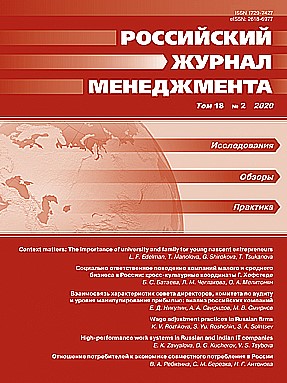High-performance work systems in Russian and Indian IT companies
DOI:
https://doi.org/10.21638/spbu18.2020.205Аннотация
High-performance work systems (HPWSs) represent one of the key topics in contemporary strategic HRM. This study aims to examine the HPWSs in the IT sector of two emerging markets, Russia and India. The research based on the survey of 132 companies indicates that there are differences in HRM practices between Russian and Indian IT companies which constitute high-involvement and high-commitment HPWSs. Further, regression analysis reveals that these systems impact the firm performance differently. The findings extend the literature on HPWSs in knowledge-intensive firms in emerging markets.
Ключевые слова:
high-performance work systems, high-performance work practices, performance, IT companies, knowledge-intensive firms
Скачивания
Библиографические ссылки
REFERENCES IN LATIN ALPHABET
Загрузки
Опубликован
Как цитировать
Выпуск
Раздел
Лицензия
Статьи журнала «Российский журнал менеджмента» находятся в открытом доступе и распространяются в соответствии с условиями Лицензионного Договора с Санкт-Петербургским государственным университетом, который бесплатно предоставляет авторам неограниченное распространение и самостоятельное архивирование.





